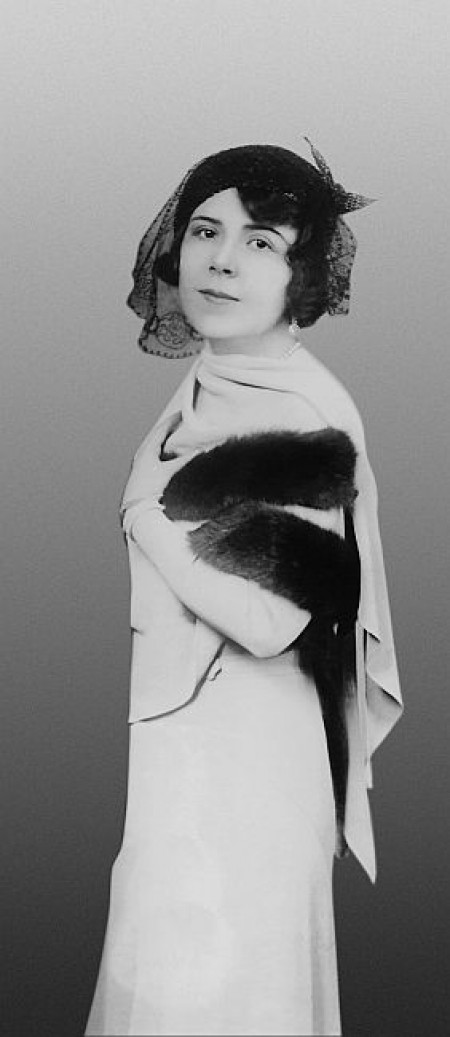
22 December 1903, Budapest – 28 September 1977, Wien
Piroska Anday began her career as a child prodigy: she was not yet seven years old when she began her studies at the Academy of Music with József Bloch. Later Jenő Hubay also taught her. She began her voice studies at the age of twelve with György Anthes, and became a student of the opera division three years later. Meanwhile she pursued studies at the Humanities Department of the Budapest University of Sciences, as well. Perfecting her voice at Mme Cahier and Gino Tessari, she made her debut in the Budapest Opera in 1920. In 1920 she sang Carmen at a guest performance in the Vienna Staatsoper, and the enormous success determined her entire career. She was contracted by that troupe the same year, and she remained a continuous member of that until 1961 (except a forced interruption in the Nazi period because of her origins).
She sang almost all the roles of the alto and mezzo soprano repertoire in Vienna. She preferred to play in works that provide opportunity to perform stage solo violin parts for a long time; even she gave violin recitals periodically, as well. From 1922 on she was a returning guest artist of the Salzburg Festival. She sang Dorabella (Cosí) in 1922 and 1928, Cherubino (Figaro) in 1923, Gluck's Orpheus in 1933, Brangäne (Tristan) in 1934, and Klytämnestra (Strauss' Elektra) in 1937 there. In 1937 her performance in Gottfried van Einem's opera, Danton's Death became a sensation in United States. She gave recitals frequently, as well.
Piroska Anday's art is characterized and made exceptional by the co-existence of her extraordinary voice qualities (her voice was particularly soft and warm still powerful and had a wide range), stage emanation, genuineness of interpretation and intelligence. She was one of the most versatile personalities of 20th century singers, regarded as an equal partner by conductors like ex. Bruno Walter.
She performed as a guest artist in several significant opera houses of the world; ex. in Paris in 1928, at Covent Garden in London in 1928 and 1929, in Buenos Aires in 1929, while in 1948 she performed at Scala in Milan. Her art has been preserved by several radio and disc recordings; the latter ones were issued under labels like His Master's Voice, Decca and Columbia among others.
Ma. J.


